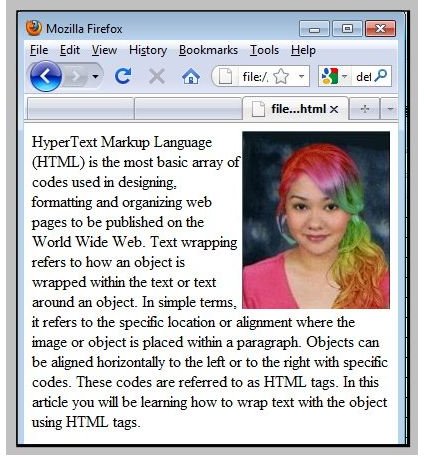

- #How to left and right justify text in html how to#
- #How to left and right justify text in html code#
I should mention that right-aligned text is different than right-aligned elements.

In the example to the right, the right-aligned text on has a maximum of 3 words per line which limits the negative user experience to be insignificant at worst – making it a good use case. This keeps the user experience in check while still adding in some rebellious formatting. There are some rare cases that it can actually make sense if used in low uses, like in this modern business letterhead example.Īs a rule of thumb, right alignment should not be used if you are aligning text with more than 5 words at a time. Right alignment should be used sparingly at best, as right alignment isn’t good for user experience and readability. With right alignment, you can include a CTA button In the top right and have the main links align with it nicely making the navigation very scannable. Right alignment is probably the most uncommon alignment used, and when it is used – it’s typically used in small quantities.Ī great example of right alignment being used effectively is in the website navigation. Its the best for readability and user experience because of the way our eyes read. Left is the most popular and default text alignment. But if it is used, its to align text up to another element for more visual flare.Īnd lastly justified alignment is used more commonly with minimal or luxurious design styles to give it some visual taste and elegance. I also often see it at the bottom of pages as call to actions, giving less lengthy content better symmetry. Left alignment is commonly associated with lengthy paragraph text, which enables it to be as easy as possible to read.Ĭenter alignment is used more sparingly and for visual appeal like with these common 3 or 4 column layouts on homepages. Left alignment is by the most popular text alignment, and also the default one. In terms of specifically web design, these types of alignment are used in different ways.
#How to left and right justify text in html code#
The formatting code is called from a separate CSS file, which includes the float:right rule, plus some additional spacing, courtesy of the margin rule.The 4 types of alignment in graphic, UI, and web design are: In this example, we include the image tag in our HTML file, but identify the image with an ID (“hp”). CSS floating imagesįollow these steps to float images on your website to the right or left and use the “no float” or “clear” formatting. While HTML image alignment offers solutions for basic layouts, floating images with CSS code can offer more flexibility. With bottom alignment, the same text aligns to the bottom right of the image instead. With top alignment, notice how the Sed feugiat tincidunt tellus text aligns with the top right of the image. Top and bottom alignĪlongside left, right, and center alignment, you can use top and bottom alignment to define the arrangement of the text and image. This code will embed the image in the paragraphs, but it’s not a very clean layout. To embed the image within the text, use the following code: Now use this HTML code to align the image to the right of the text: Use the following HTML code to align an image to the left:Īs you can see, the image is left-aligned, with the text displayed on the right. HTML image alignmentįollow the steps below to image align to the left, the center, or the right of your webpage.
#How to left and right justify text in html how to#
We’ll first go through the steps for aligning images with HTML, then show you how to float images with CSS.

Float rules are also commonly used to arrange images in horizontal rows, as you find with image galleries and thumbnail selectors. You can easily define additional CSS rules to ensure sufficient whitespace around the image.


 0 kommentar(er)
0 kommentar(er)
